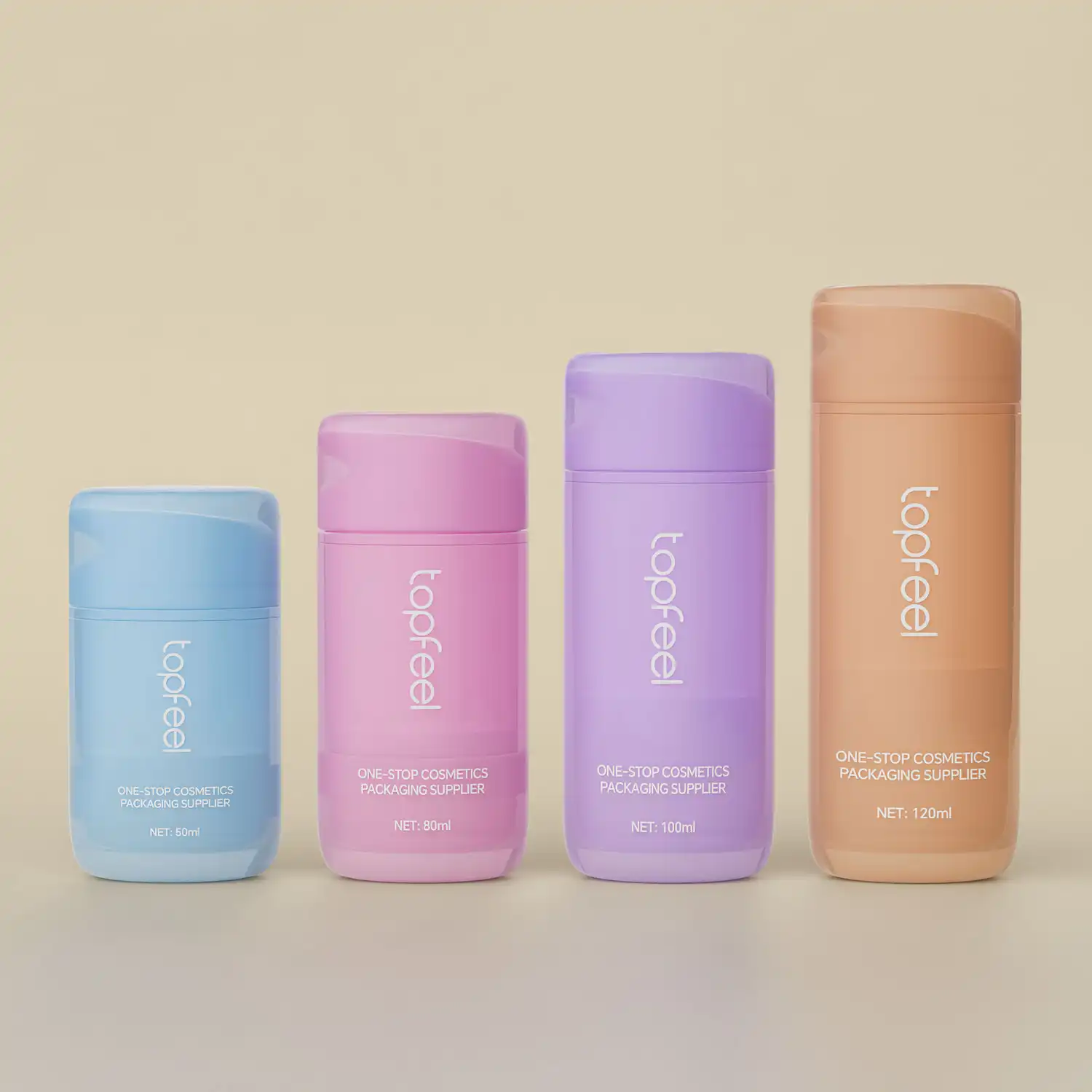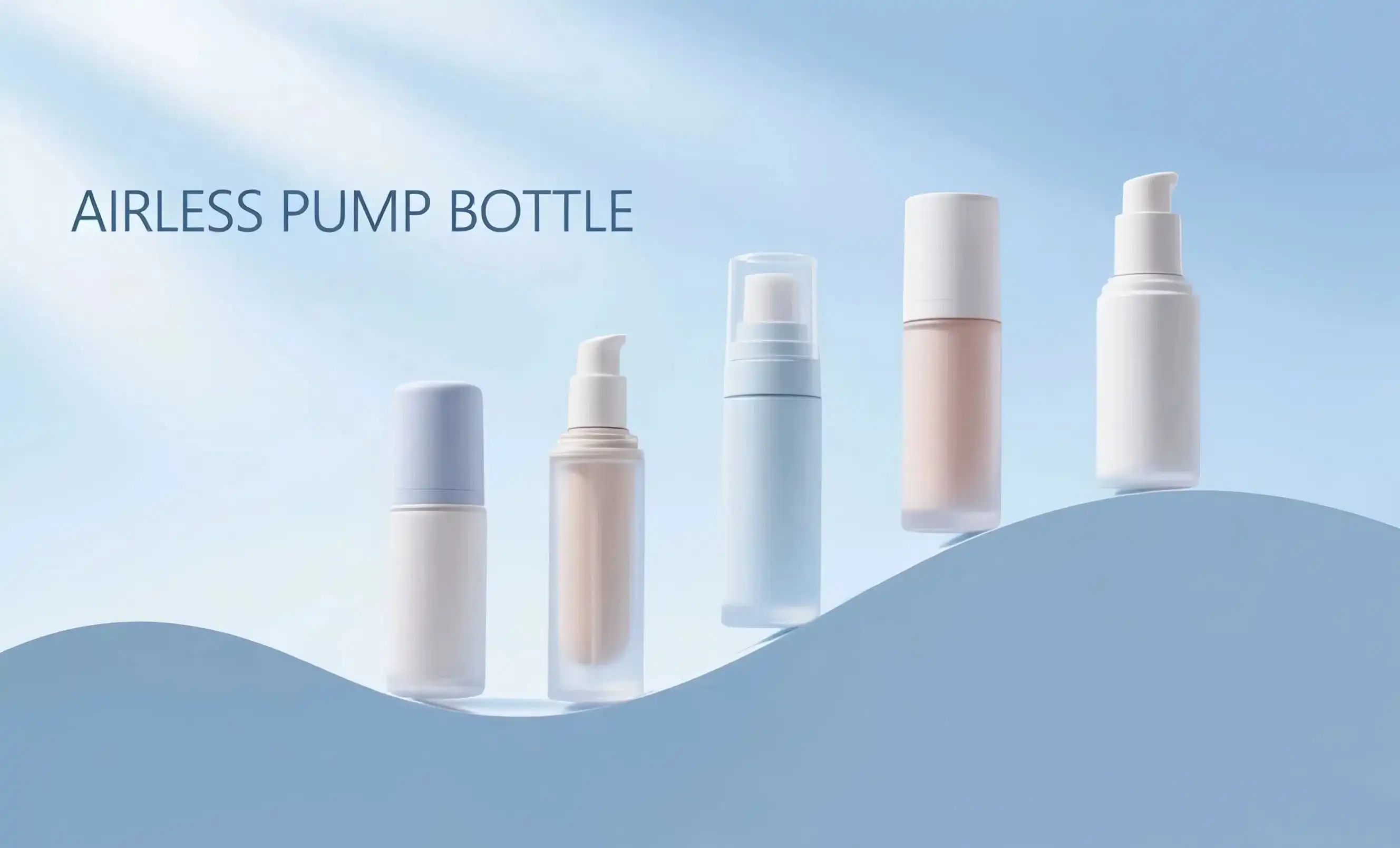Can biodegradable airless bottles replace plastic ones?
As the beauty industry seeks more sustainable packaging solutions, the question of whether biodegradable airless bottles can effectively replace traditional plastic ones is at the forefront of many discussions. Biodegradable materials offer a promising alternative to conventional plastics, potentially reducing the long-term environmental impact of cosmetic packaging.
Advantages of biodegradable airless bottles
Biodegradable airless bottles present several advantages over their plastic counterparts. They break down more quickly in the environment, reducing long-term pollution. Many are made from renewable resources, lessening dependence on fossil fuels. These bottles also align with growing consumer preferences for eco-friendly products, potentially boosting brand appeal.
Challenges in biodegradable bottle adoption
Despite their benefits, biodegradable airless bottles face several challenges. Durability and shelf life can be concerns, as some biodegradable materials may degrade faster than desired. Cost is another factor, as these materials are often more expensive than traditional plastics. Additionally, proper disposal infrastructure is crucial for these bottles to biodegrade effectively, which is not universally available.
Performance comparison
When it comes to performance, biodegradable airless pump bottles are increasingly matching their plastic counterparts. Advanced formulations allow for similar airtight properties, protecting products from oxidation and contamination. However, rigorous testing is essential to ensure they meet the same standards for different product types and viscosities.
Are recycled-material airless pumps as effective?
The effectiveness of recycled-material airless pumps is a critical consideration for brands looking to enhance their sustainability profile without compromising product quality. These pumps, often made from post-consumer recycled (PCR) plastics, are gaining traction in the beauty and skincare industries.
Functionality of recycled-material pumps
Recycled-material airless pumps have come a long way in terms of functionality. Advanced recycling and manufacturing processes allow for the production of high-quality components that can match the performance of virgin plastic pumps. They provide the same airtight seal and precise dispensing capabilities, ensuring product integrity and user experience are not compromised.
Durability and longevity
One concern with recycled materials is their durability over time. However, rigorous testing and quality control measures have led to the development of recycled-material pumps that are as durable as their non-recycled counterparts. These pumps can withstand repeated use and maintain their effectiveness throughout the product's lifespan.
Impact on product preservation
The primary function of airless pumps is to preserve product quality by minimizing air exposure. Recycled-material pumps are designed to maintain this crucial feature. They effectively prevent oxidation and contamination, ensuring that the product remains fresh and potent until the last drop. This preservation capability is particularly important for sensitive skincare formulations and natural products.
Eco airless bottles: Sustainable innovation or greenwashing?
As the demand for sustainable packaging grows, it's essential to critically examine whether eco airless pump bottles represent genuine sustainable innovation or if they're merely a form of greenwashing. This evaluation requires a nuanced understanding of the materials, manufacturing processes, and overall lifecycle impact of these products.
Material composition and sourcing
Truly sustainable eco airless bottles should be made from materials that have a lower environmental impact than traditional plastics. This could include recycled plastics, bioplastics derived from renewable resources, or innovative materials that biodegrade more readily. The sourcing of these materials is crucial - they should be obtained through environmentally responsible methods that don't contribute to deforestation or other ecological issues.
Manufacturing processes
The production of eco airless bottles should involve energy-efficient manufacturing processes that minimize waste and emissions. Companies claiming sustainability should be transparent about their production methods and actively work to reduce their carbon footprint. This might include using renewable energy sources, implementing water conservation measures, or adopting closed-loop production systems.
End-of-life considerations
A key aspect of sustainability is what happens to the product after use. Genuinely eco-friendly airless pump bottles should be easily recyclable, biodegradable, or designed for reuse. Companies should provide clear guidance on proper disposal and, ideally, offer take-back programs or partnerships with recycling initiatives.
Transparency and certification
To differentiate between sustainable innovation and greenwashing, look for companies that are transparent about their sustainability claims. Third-party certifications, lifecycle assessments, and detailed sustainability reports can provide credibility to these claims. Brands that are truly committed to sustainability will be open about both their achievements and the challenges they face in improving their environmental impact.
Balancing functionality and sustainability
While striving for sustainability, it's crucial that eco airless bottles maintain their primary function of preserving product quality. A bottle that fails to protect its contents effectively could lead to product waste, negating any environmental benefits of the packaging. The most sustainable solutions are those that balance ecological considerations with practical functionality.
Conclusion
Eco-friendly airless pump bottles represent a significant step forward in sustainable cosmetic packaging. While challenges remain, particularly in terms of biodegradable materials and recycled content performance, the benefits they offer in terms of product preservation, waste reduction, and environmental impact make them a worthwhile investment for forward-thinking brands.
As the beauty industry continues to evolve, the demand for sustainable packaging solutions will only grow. Brands that embrace these innovations now will be well-positioned to meet consumer expectations and regulatory requirements in the future. However, it's crucial to approach sustainability claims critically, looking for transparency and tangible evidence of environmental benefits.
For skincare brands, makeup companies, and cosmetics manufacturers looking to enhance their sustainability profile without compromising on quality, eco-friendly airless pump bottles offer a compelling solution. These packaging options not only align with environmental goals but also provide the functionality and product protection that discerning customers expect.
At Topfeelpack, we understand the unique needs of the beauty industry and the importance of sustainable packaging solutions. Our advanced airless pump bottles are designed to meet the highest standards of product preservation while minimizing environmental impact. We offer fast customization, competitive pricing, and quick delivery to help you bring your sustainable packaging vision to life.
Are you ready to elevate your brand with eco-friendly airless pump bottles? Contact us at pack@topfeelgroup.com to learn more about our custom solutions and how we can support your sustainability journey. Let's work together to create packaging that's good for your products, your brand, and the planet.
References
- Johnson, A. (2022). "The Rise of Eco-Friendly Packaging in the Cosmetics Industry". Sustainability in Beauty, 15(3), 78-92.
- Smith, B. et al. (2023). "Performance Comparison of Biodegradable and Traditional Plastic Airless Bottles". Journal of Cosmetic Science, 74(2), 145-160.
- Green Packaging Institute. (2023). "Annual Report on Sustainable Cosmetic Packaging Trends".
- Lee, C. and Wong, D. (2022). "Life Cycle Assessment of Recycled Material Airless Pumps". Environmental Science & Technology, 56(11), 6789-6801.
- Brown, E. (2023). "Consumer Perceptions of Eco-Friendly Beauty Packaging". Marketing Science, 42(4), 523-539.
- Global Cosmetics Sustainability Forum. (2023). "Whitepaper: Navigating Greenwashing in Beauty Product Packaging".




 - 副本_1745399213966.webp)

_1747827716538.webp)

